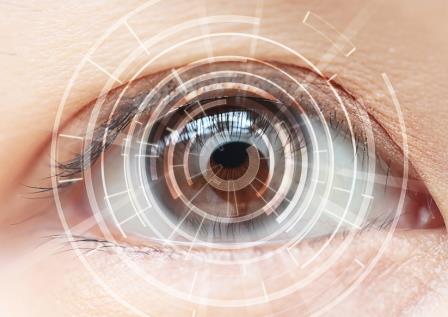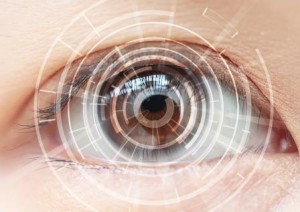
EMDR: What Is It And How Can It Help Me?
EMDR: What Is It And How Can It Help Me? EMDR stands for eye movement desensitisation and reprocessing. This is a somewhat clumsy title for what is in practice an elegantly simple process. In this blog I will take you through what EMDR is, what conditions it can treat, and what you can expect to happen before and after an EMDR session. As it’s name suggests, uses eye movements to stimulate the brain’s ability to process upsetting events and emotions that it could not process at the time they happened.
The therapy was developed by psychotherapist Francine Schapiro in 1987. Walking through the park, Schapiro noticed that her eye movements helped her to reduce the distress she was feeling about some unpleasant memories. She decided to research the connection of eye movements to traumatic memories.
Eye Movement Desensitisation and Reprocessing is a form of psychotherapy which aims to resolve disturbing emotions which are still being felt after a trauma. A trauma may be a single event, such as a car accident, or multiple events over years such as emotional or physical abuse and neglect. We experience these emotions as both vivid and disturbing even years after the event. They are also accompanied by negative for unhelpful ideas about ourselves, which we adopted after the trauma. For example, after a car accident someone may decide, ‘I’m not safe’ or ‘Life is dangerous’. These ideas prevent us from living life as fully as we want to.
All therapies are based on models of human behaviour and of the mind. It helps to understand a bit of what these models are about if you want to fully understand the therapies themselves. The model on which EMDR is based is called Adaptive Information Processing. (AIP) It assumes that, just as our bodies have a tendency to heal, human beings have a natural tendency to move towards mental health.

EMDR Therapy Sheffield
The AIP model says that people have an information processing system which digests information into memory networks which are already there. These memory networks are the basis of how we perceive reality, and of our behaviour and attitudes.
You are reading this now, for example, and it makes sense to you because you understand English and can read written English. If someone comes and disturbs you and you have to stop what you are doing, you may get irritated with that person but be able to resolve it based on memory networks about relationships and getting on with people. Any information coming to us via our senses is integrated by our information processing system and connected to related information. Related memories, thoughts, images emotions and sensations are linked to one another.
When trauma occurs, the nervous system becomes unbalanced or overwhelmed and this information processing system cannot work properly. It either processes things incompletely or they become blocked altogether. Strong negative feelings seem to interfere with information processing. If a memory is encoded in a distressing form, it can be triggered in the future by both external stimuli (seeing or hearing something, for example) and internal stimuli (a thought). The memory feels as if it is frozen it time. You may go over and over it and it never feels better.
It is like a car wheel in a ditch, going round and round but never forward. Also, the memory cannot make links to more adaptive information stored in different memory networks. For example, a person who has been the victim of an attack may blame themselves. Elsewhere in their brains they may know that attackers are responsible for such crimes, but this knowledge cannot link in a meaningful way with the belief that they are to blame.
So traumatic memories are inadequately processed. If you recall the memory, or it is triggered by a similar situation, you may become very upset and even experience a strong physical reaction like anxiety or panic. EMDR therapy kick-starts your information processing system so that the traumatic memory no longer has distressing emotions attached to it, and you can think about it in a healthier (more “adaptive’) way. It lets your brain do what it wants to do but has been blocked from doing. It is the passing person who comes and lifts the wheel out of the ditch, so you can move forward gain.
Clients after EMDR typically say that the memory is harder to recall, and that when they do access it, it seems faded and without emotion. They think about it differently. They may think, ‘It happened, but I survived and I’m stronger’, for example. Interestingly, when they talk about the memory after EMDR, clients almost always wave their hand to the back of their heads, like they have literally put it behind them.

EMDR: What Is It And How Can It Help Me?
What happens in EMDR treatment?
EMDR treatment has eight phases.
In the first phase, the therapist takes a history and together you identify potential targets for EMDR treatment. You may have a specific memory you want to work on, or you may be aware of a very limiting belief which is holding you back, which may have been formed as a result of several events. An example of a limiting belief may be “I’m stupid” because you were told this all the time by your parents.
Together with your therapist you can decide on key memories of events which caused you to form that belief. In EMDR, you do not have to talk about your past in detail. Some people are comfortable with going into specifics, some less so. If the therapist asks you, for example, “What event do you remember when you think, ‘I’m stupid?’ “ it is enough for you to say, ‘something that happened when I was 8 with my mum’.
The history phase is important for establishing trust and rapport between you and your therapist. It is also important because it allows the therapist to identify safety factors. If a client is very vulnerable, for example, they will need support to get to a more stable place before beginning treatment. Consequently whereas for most people this phase lasts for one therapy session, for some it can be longer.

Psychotherapist EMDR. Sheffield
In the second phase, the therapist will explain to you the theory of EMDR and answer any questions you have. The therapist also helps you to create a ‘safe place’. For this you remember or create a safe place in your mind, where you can go if the EMDR begins to feel upsetting. The safe place makes you feel protected and positive about yourself. The safe place exercise gives people a valuable tool outside sessions, to use when they feel upset or overwhelmed. In this phase, you will also test eye movements. If the eye movements are inappropriate for you, for example if you have eye problems, there are other methods which can be used such as tapping.
The Third phase is the assessment phase, which involves a series of questions. This takes up to ten minutes. The questions are:
- What memory do you want to work on? What picture do you get?
2. When you think about that memory, what negative belief do you have about yourself now? This is called the NEGATIVE COGNITION. Examples of negative cognitions include, “It’ my fault” ‘I can never be safe”.
3. What would you like to believe about yourself when you access that memory? This is called the POSITIVE COGNITION. Examples of positive cognitions include “I am lovable” “I deserve to live”.
4. Right now, before any treatment, how true does that belief feel on a scale of 1-7, 1 being completely false and seven being completely true? This is called the VALIDITY OF COGNITION. It is usually low before any treatment.
5. What emotions do you feel when you bring up that memory?
6. How distressing are those emotions on a scale of 0-10, 0 being no distress or neutral and 10 being the worts distress you can imagine? This score is called SUBJECTIVE UNITS OF DISTRESS. The score is typically high before any treatment.
7. Where in your body do you feel those emotions? You may get tension in your shoulders, for example, or anxiety in your chest.
You will notice that the memory is not accessed just as a picture, but as a negative thought and bodily sensations. This is because memories are stored in all these ways. Some people may have a strong physical sense of a memory and not many picture memories. That’s fine. Accessing the memory through various channels also means that people are less likely to feel that they are ‘not doing it right’.

EMDR: What Is It And How Can It Help Me?
Now, the eye movement phase (phase 4) of the treatment can begin. The therapist invites you to go into the memory whilst at the same time thinking about the negative cognition, feeling any feelings the memory arouses, and noticing what you are feeling in your body. She then moves her fingers in front of your eyes whilst you notice all these things. The movements are quite fast, and span a diameter f about a metro. They are done in sets of about 12 swipes. You follow the therapist’s fingers with your eyes, without moving your head. After a set of eye movements, the therapist asks you what you noticed. You may have noticed that the emotions got stronger, or that the sensations in your chest eased or moved elsewhere. Your mind may have moved forwards or backwards within the memory itself.
All feedback is valid. The therapist says, ‘Just go with that’ and you do more eye movements. This continues until the feedback you give is positive or neutral. Then the therapist checks the SUD’s score. If it is 0-1, we can begin phase five.
In Phase five, your positive cognition is rated from 1-7 It should be higher than before treatment. The therapist invites you to think of the memory alongside the positive cognition and does some slower eye movements . This continues until you rate the positive cognition as 7.
In Phase 6, the therapist invites you to close your eyes and think of the memory and positive cognition as you scan your entire body. If you feel any tension, discomfort or stress whatsoever, more eye movements are carried out to process those feelings.
In Phase 7, if there are no more bodily sensations to resolve, the session is complete.
Phase 8 is the next session. The therapist makes sure that the target memory has been fully processed and that you have been feeling better. Clients usually report a great reduction in their level of distress. It may be that the EMDR has activated other material which needs treatment. If this has happened, you treat those in the same way.
Depending on what you want to work on, a full EMDR treatment can take from 2-4 sessions. Although EMDR is faster that other forms of therapy, speed is not the issue and you must go at a pace that is comfortable for you.

emdr-therapy-sheffield
What Can EMDR treat? Is It The Right Therapy For You? And How Can It Help Me?
EMDR is recognized by The National Institute for Health and Care Excellence (NICE) as an effective treatment for Post Traumatic Stress Disorder (PTSD).
PTSD is an anxiety disorder which develops following a traumatic event. Examples of traumatic events are: car accidents, rape or sexual assault, surviving natural a disaster. You can develop it if you directly experienced the event, witnessed it, or if it happened to someone close to you. If you work in an area where you are often exposed to upsetting material second hand, for example if you work for the police or social services, you can also develop PTSD. The PTSD may be the result of prolonged abuse. It does not have to be a single event.
Symptoms are:
-Upsetting, intrusive thoughts of the event.
-Flashbacks to the event.
-Nightmares about it.
-Feeling emotionally numb.
-Avoiding places, people or situations which remind you of the event.
-Difficulty sleeping.
-Feeling easily angered or irritated.
Eye Movement Desensitisation and Reprocessing can also be used successfully to treat any disturbing emotions and negative beliefs which may be the result of things like being neglected or bullied by your family as a child, bullying at school, the experience of having your physical and emotional needs ignored as a child. Adults who have been in abusive relationships or experienced bullying and abuse from friends or colleagues at work can also resolve these issues using EMDR. EMDR can also be used to treat phobias, panic and anxiety and complicated grief.
If you would like an informal chat about whether EMDR is right for you, please do get in touch.
Hypnotherapy & Psychotherapy & EMDR
Sheffield
Mobile : 07957 713 102